Ski-pulka expedition in Greenland
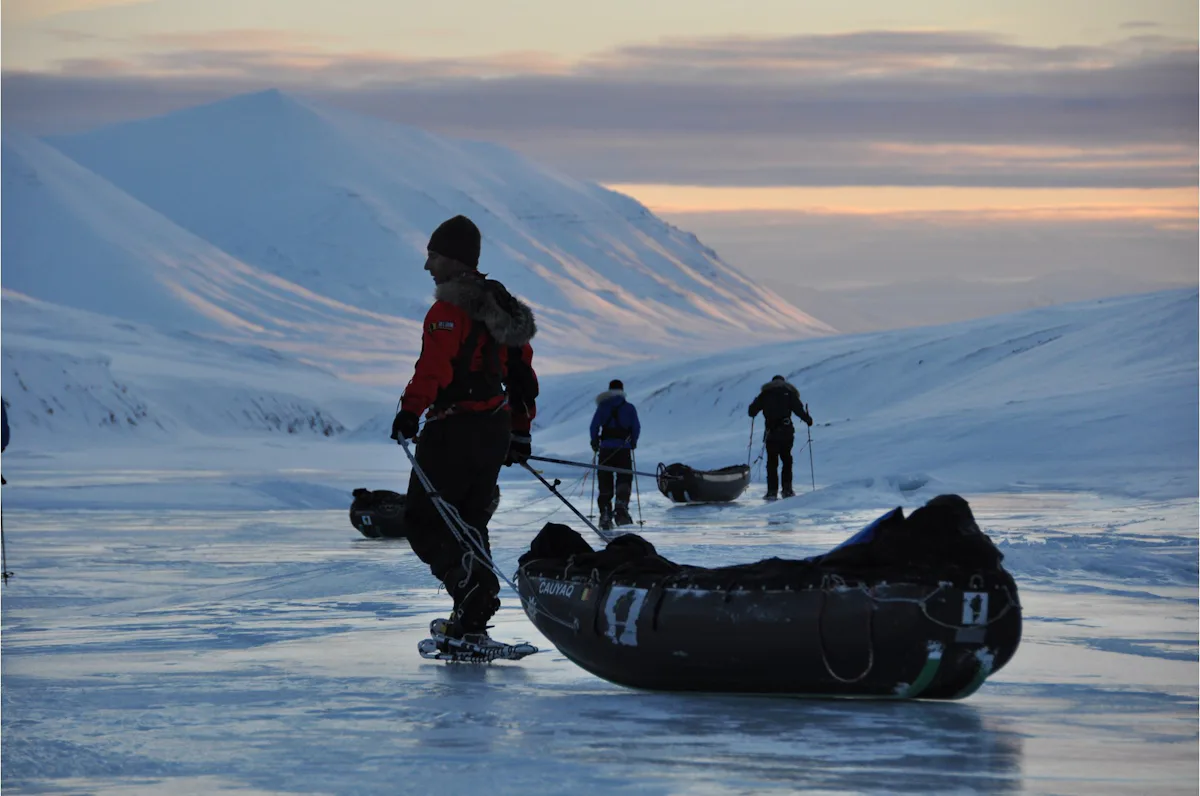
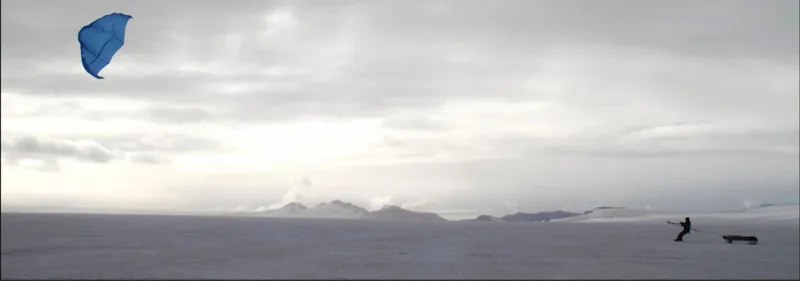
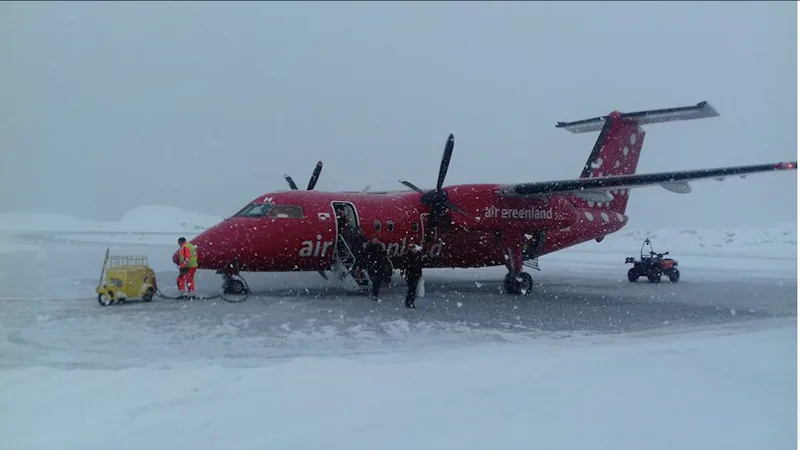
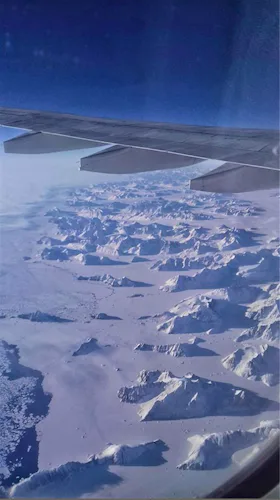
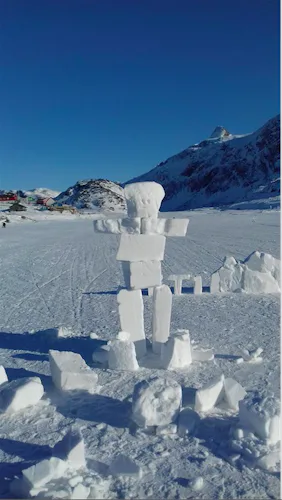
A 14-day ski and pulka expedition, traversing the Greenland Icecap and Kangerlussuaq (Sondre Stromfjord), together with one of the certified guides from the Polar Experience team, personally trained by Dixie Dansercoer.
Group
14 Days
Feb
Intermediate
Intermediate
Description
Join me for a unique ski and pulka expedition, traversing the large Greenland Icecap!
During this 14-day deep-winter adventure, we’ll navigate through the Greenland Icecape, which is the second largest ice field in the world.
Besides we’ll explore the area of Kangerlussuaq (Sondre Stromfjord). This is a town lying on the western part of the country, at the head of Kangerlussuaq Fjord.
This trip also includes a ski-kite initiation.
Please contact me if you want to be a part of this fantastic expedition! I will be glad to answer all your questions and give you all the details you need.
Price includes
- Accommodation included
- Guiding fee
- Breakfast
- Lunch
- Dinner
Price details
- This is the price to join a group from 6 to 12 people.
Itinerary
Day 1: Copenhagen
All participants and guides gather and spend the night together in Copenhagen.
Day 2: Arrival in Greenland
Flight from Copenhagen to Kangerlussaq, the airport that serves as the most reliable and main transit airport in Greenland. Winter conditions can already throw a spanner in the works, but here the arrival and departure times can be maximally insured.
We enjoy the beautiful Greenland environment and make the first preparations for the coming expedition.
Day 3: Preparation
Good preparation is the key to success! Everyone gets his / her personal expedition material, including a sleeping bag, sleeping mat and various other materials. The tents, cooking fires and other duo material will also be distributed, because we will sleep in a tent per 2. We double-check the functionalities of the material and thus avoid less pleasant surprises during the expedition. Finally, we store all the food strategically in our pulkas.
Day 4: Start of the Arctic Circle Trail expedition
After a hearty breakfast we start and we are taken by our host to the beginning of the Arctic Circle Trail.
As with any polar expedition, everyone has to get used to all materials and manipulate everything we need to get through the day well organized. When the tents are set up at the end of the first day, the cosiness of the warm sleeping bag beckons.
Day 5: From cairn to cairn
The route of the Arctic Circle Trail is indicated here and there by cairns (piled stones) that may or may not protrude above the snow and thus serve as welcome guides. Misguided are the traces of hunters who walk in different directions and can not be followed. Because we still have a firm step regime, we are progressing with an average of 15 to 20 km / day. That means that we get up before the sun does the same to make the maximum use of the limited hours of daylight.
Day 6: Continued from the Arctic wilderness
Gradually, some routine in our actions begins to make the expedition life a bit easier and we can try to be ready to start within 3 hours. This seems very spacious, but in the morning there are many tasks to fulfill. First you melt snow and ice for breakfast, afterwards you ensure maximum hydration and also fill the thermosens where you will come through the day. You also count on the fact that all operations in the cold last two to three times as long, as well as taking the luggage and cleaning up the tent camp takes a considerable amount of time. The morning routine will require a lot of energy! Once busy and on the road, however, your batteries are constantly charged by the endless beauty of this unique Arctic wilderness.
Day 7: The animal kingdom of Greenland
With regular climbs that never reach higher than 500 m, the terrain ensures plenty of variety. Here and there reindeer or musk oxen will be the price for the patient and trained eye of spotters who do not sink into a step rhythm that invites to languish in deep thoughts. Slightly more difficult to see are the arctic hare and arctic fox because they integrate sight entirely into the white canvas.
If the efforts of the day take the upper hand and everyone falls asleep asleep after the evening meal, the night graves among the expedition members will be embraced as heroes if they ring the alarm clock at night during a nightly walk when they use the Aurora Borealis. (Northern Lights). How difficult it is to get out of that warm sleeping bag, it is more than recommended! You can not miss the gracious, dancing beams of light that illuminate a particle of the enchanting polar mystery!
The photographers among us can safely take their time to record these impressions on the sensitive plate. Of course, the group continues to maintain the necessary rhythm so that no one gets cold by standing still for a long time, and that is why it is a standard procedure to charge the strongest of the group with a second sledge so that the left-behind photographer, after taking his snaps, effortlessly re-enters the group. can join. The same scenario presents itself when, for example, an unexpected toilet visit is required.
Day 8: The Ittineq river
Approximately in the middle of the ACT we find a large open valley where the Ittineq river provides fresh water during the summer and a bridge was built to safely cross the river. In March, however, everything is frozen and we push our skis effortlessly across the frozen plain.
On the route of the Arctic Circle Trail we will encounter a number of smaller huts that previously serve as ’emergency accommodation’ and sometimes offer only 4 berths and are therefore not an option for us. They are admittedly a welcome sign of human presence …
Day 9: Towards sea level in Sisimiut
The greatest differences in altitude are to be found in the first part of the route, but then we descend at least towards sea level where Sisimiut celebrates the transition from landmass to ocean. The last climb that can still be overcome remains one where we still have some energy left. The daily average has gradually increased and we have an ever smoother routine. Everyone knows where and when they can help with daily tasks. After some redistribution of materials and nutrition, all expedition members have also found the right weight for his / her sled during the past few days, so that the group functions as a whole.
Day 10: Overnight on crackling ice
One of the best things about polar expedition is the realization that in such an extreme climate and in the greatest seclusion you can enjoy the serenity and tranquility that surrounds you. The weather conditions in March are mostly reliable calm. The snow layer absorbs all sound. The pure white ensures a calming homogeneity. Only our ski tracks will temporarily cause a disruption of the scene. Symbolically, we will make the location of our tent camp as visible as possible and again smooth out. Go places, leave no traces.
When we choose to set up the tent camp on one of the many lakes, we regularly get a concert of crackling ice at night. With the day differences in temperature, cooling / heating will stimulate the shrinking and expansion of the ice. At night everything becomes even more audible and it seems as if there is a danger in those musical interludes of the deep silence. At temperatures of 25 ° C on average, there is no reason to panic because the lakes are completely frozen.
Day 11: The first signs of a human settlement
Today we reach our final destination Sisimiut. The excitement of achieving our goal gives extra energy and the countdown of the last kilometers makes all fatigue disappear as snow in the sun. When we see in the distance the first signs of a human settlement – call it a real city – the desire for warmth and a hearty meal grows among the ones, with the others there is some nostalgia. Sisimiut is growing, we quickly see cars driving from one to the other and we have a chat with the local population, who certainly wants to hear how we have done it. Upon arrival at the hotel, we hook the musketon of our armor for the last time and everyone looks forward to that deserved shower!
Day 12: An overview of the covered route
Salvation itself … such a deep night’s sleep in a soft bed! Revaluation for the smallest things is something that we hopefully can take with us for a long time in daily life, just like the solidarity of the group. With the end of this expedition, the further course does require some organization and the sleds have to be completely unpacked to let everything dry and ready for transport back to Kangerlussuaq. Of course, a visit to Sisimiut is a must.
Day 13: Return journey
When the short return trip to Kangerlussuaq calls us to the airport, we are already looking forward to a seat at the window to view our ski route from a height.
The transit in Kangerlussuaq feels a bit like coming home again. Again we find our stuff that allows us to take a second step towards civilization. All expedition materials are stored in the storage place where they are waiting for a new adventure. The return flight to Copenhagen takes place in the afternoon and we turn our timepieces 4 hours ahead.
With regular waiting times between the flights, photos are exchanged and we think back to the deep experiences we have all experienced. Things that were experienced as difficult, mistakes that were corrected at the suggestion of the guide, materials that were gradually experienced as fellow travelers instead of dead matter … Everyone has experienced it in his / her way, the demand for a new expedition will be being answered with a yes / no based on the appreciation of the expedition. But what leaves no doubt is that the intensity of this experience will continue to reverberate for a long time.
Day 14: Saying goodbye
After a nice breakfast with the whole group, it’s time to say goodbye. Whether you enjoy a few days in Copenhagen or return home … You will never forget this experience again!
About the guide
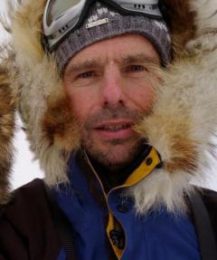
Polar Experience
5.0
(1)
Master Polar Guide
Polar Experience is a Polar guiding agency designed and created by Dixie Dansercoer and managed by Julie Brown.
Dixie Dansercoer (12 July 1962 – 7 June 2021) was a Belgian polar explorer with thirty years of experience in polar travel and expeditions. He went to the poles on 34 occasions, for personal or guided expeditions, photo and film productions, and lectures aboard polar cruises.
He received the title of ‘Master Guide’ in the newly established IPGA platform (International Polar Guides Association) and he's one of only four people to have crossed the complete Arctic Ocean and the Antarctic continent.
In 2012, together with Sam Deltour, Dixie broke the world record for the longest non-motorized expedition to the South Pole. On skis, and assisted by a kite, they traveled at least 5013km.
He was the only polar guide who could provide expedition material for twelve expedition members, in the Arctic (Longyearbyen, Spitsbergen) the Antarctic (Wolfs Fang, Queen Maud Land), and also in Kangerlussuaq, Greenland.
Today, the Dixie Dansercoer Team is led by Eric and Julie and his amazing and well-prepared team of guides, whom he trained himself. Please get in touch with them if you are interested in the different tours they are guiding. They will be happy to introduce you to the wonderful world of Polar Travel.
Languages
German | French | English | Dutch
Certificates
IPGA
What people are saying about Polar Experience
Jukka
You already have my verbal comments.
You may also like
Find more ski touring trips
Join our newsletter!
Stay up-to-date on the best adventures.








